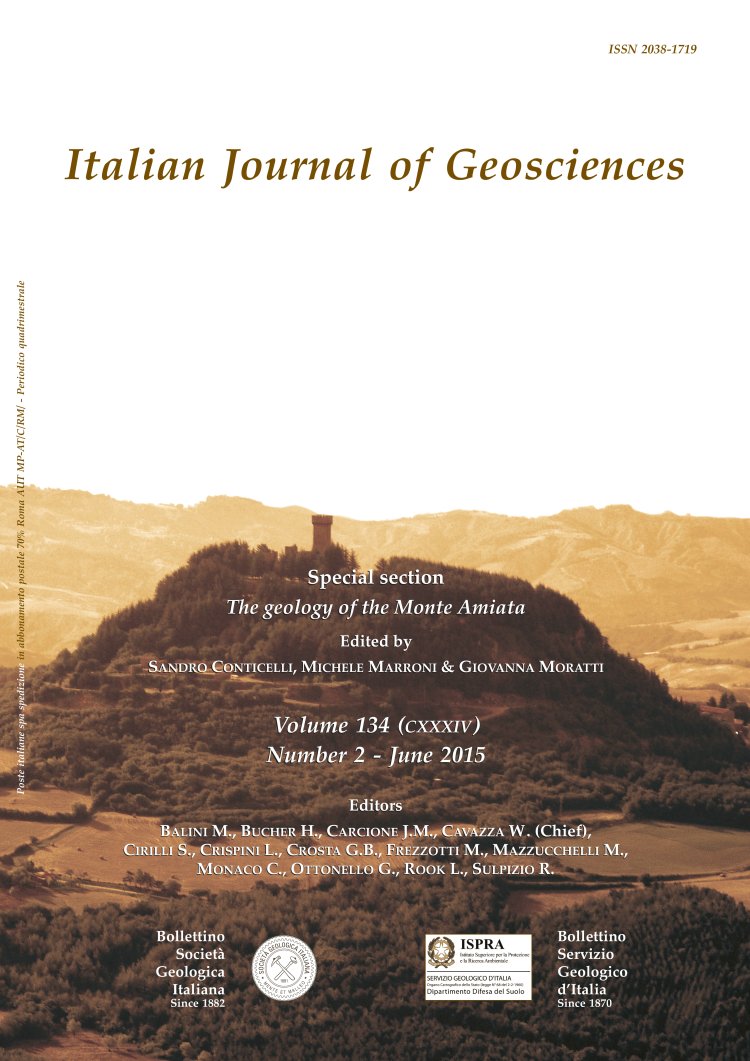
Geochemical characterization of the ground waters from the former Hg-mining area of Abbadia San Salvatore (Mt. Amiata, central Italy): criticalities and perspectives for the reclamation process
Orlando Vaselli (1), (2), Barbara Nisi (3), Daniele Rappuoli (4), Francesco Bianchi (5), Jacopo Cabassi (1), Stefania Venturi (1), Franco Tassi (1), (2) & Brunella Raco (3)
(1) Department of Earth Sciences, Via G. La Pira, 4 – 50121 Florence (Italy). Corresponding Author: orlando.vaselli@unifi.it
(2) CNR-IGG Institute of Geosciences & Earth Resources, Via G. La Pira, 4 - 50121 Florence (Italy).
(3) CNR-IGG Institute of Geosciences & Earth Resources, Via Moruzzi, 1 - 56124 Pisa (Italy).
(4) Union of the Amiata-Orcia Valley Municipalities, Via del Colombaio, 98 - 53023 Gallina, Castiglion d'Orcia, Siena (Italy).
(5) SBC Geologi Associati, Via XX Settembre, 78 - 50129 Florence (Italy).
Volume: 134 (2015) f.2
Pages: 304-322
Abstract
This study was aimed to geochemically characterize the groundwater system of the Abbadia San Salvatore (Mt. Amiata, Siena, central Italy) former Hg-mining area, whose activity closed at the end of the seventies, in order to accomplish the reclamation process after that the former ownership of the mining concession (E.N.I. National Agency for Hydrocarbons, AGIP Division) passed the property to the Munici pality of Abbadia San Salvatore in 2008. The study area covers a surface of about 65 ha and since February 2013 old and new piezometers were used to assess the main chemical features along with the concentrations of As, Hg and Sb. Four sampling campaigns were carried out up to January 2014 and a relatively large spatial and temporal geochemical variability was observed. Apparently, the working activities related to the construction of an artificial channel (commenced in March 2013 and terminated at the end of 2013), which crosscuts the whole mining area to drain the surface waters in order to minimize the interaction between the meteoric waters and the by-products deriving by the production of metallic mercury, did not affect the groundwater system. Slag, roasted material and other by-products deriving from the local and surrounding Hg mining activities were indeed used to fill the terrain where most of the mining structures lie. The dominating geochemical facies was Ca(Mg)-SO4 and, subordinately, Ca(Mg)-HCO3, while Na-HCO3 compositions were rarely found. Dissolution of gypsum/anhydrite and carbonates and hydrolysis of sulfide minerals are likely the main geochemical process that produced the observed geochemical compositions. The contents of As and Sb only sporadically exceeded the maximum allowable concentrations intended for human consumption (98/83 EC Directive 1998), i.e. 10 and 5 mg L-1. Conversely, those of Hg were constantly above the EC directive, e.g. 1 mg L-1, with the exception of those waters located up- and downstream the groundwater flow. This indicates that the exotic filling terrains in the mining area, mainly consisting of roasting products, likely play a pivotal role in regulating the concentrations of Hg, which reached values up 853 mg L-1. The construction of permeable reactive barriers, located downstream the water flow, appears to be the most promising solution for the removal of Hg, although, according to the literature, several materials, tested with laboratory experiments, can be used and, as a consequence, it is necessary to individuate specific piezometers with different Hg concentrations where pilot investigations are to be carried out before undertaking any remediation actions.
Keywords
Get Full Text